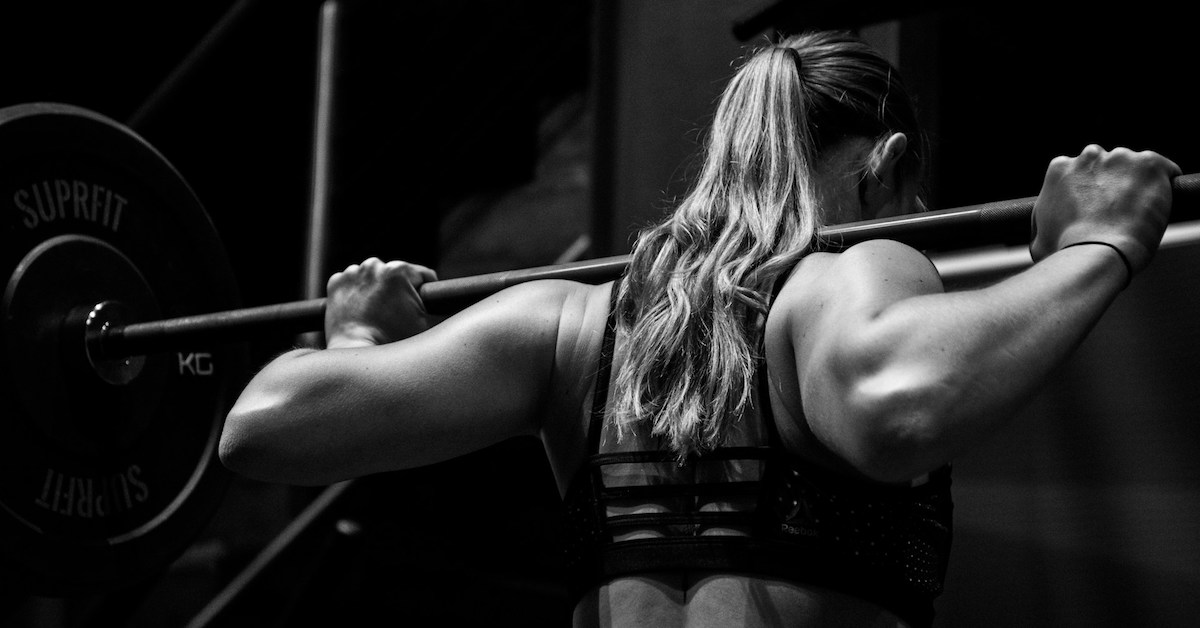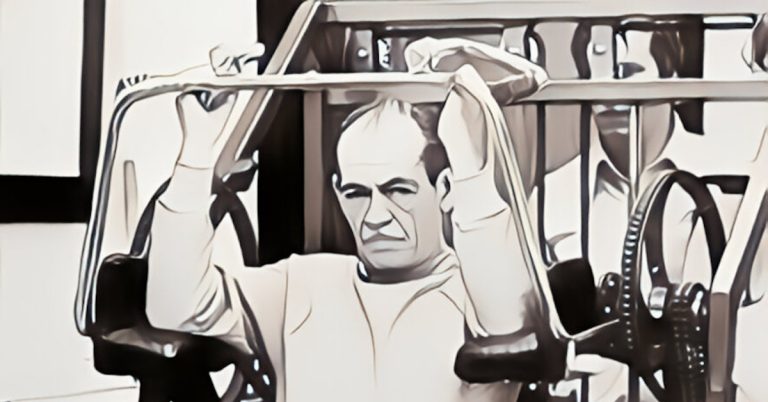A few weeks ago, I gave you a taste of seven advanced exercise variations. Well, I’m back with seven more that you can use immediately in the gym to boost your training progress. No time for foreplay—let’s get straight to it.
1. Accommodating Assistance
Back in the mid-1950s, Dr. Arthur Steindler introduced the concepts of open kinetic chain (OKC) and closed kinetic chain (CKC) movements. In a nutshell, an OKC movement is when the terminal segment (the distal end of the extremity of interest) is free to move in space, whereas a CKC movement involves the terminal segment being restrained against an immovable object or surface.
Think of a leg extension versus a squat—it’s easy to tell which is which. But what about a leg press? Some say OKC; others say CKC. Rather than debating, here’s another way to define these terms: an OKC movement is when you move an object around your body, and a CKC movement is when you move your body around an object. By this definition, a lat pulldown is OKC, and a pull-up is CKC.
Moving your body around an object is far more neurologically demanding. It requires greater core stability, and typically, more body weight is being lifted. This is why strength gained in a CKC movement transfers to its OKC equivalent—but not vice versa.
For example, the average 200-pound male lifter can usually handle over 100 pounds on a prone leg curl. But ask that same guy to do full-range Nordic hamstring curls using just body weight, and he’ll struggle. Most guys lift just over 50% of their body weight on this exercise, assuming they even make it halfway down. The prone leg curl won’t improve Nordic curl strength, but if you build strength on the Nordic curl, it will carry over to the prone leg curl.
A great way to get strong on the Nordic hamstring curl is by using accommodating assistance with a lat pulldown machine. Kneel on the seat facing away from the machine, secure your ankles against the knee support, and instead of using the high cable, hold onto a resistance band secured to the machine. As you descend, the band provides more assistance where you need it most. This turns a nearly impossible exercise into an achievable one. Give it a try—you’ll feel it the next day!
If you have a SITFIT cushion, kneel on that. It adds comfort, helps with weight shifting, and prevents sliding down the seat.
2. Accommodating Resistance
The reverse hyperextension is a fantastic exercise for the posterior chain. To take it up a notch, use resistance bands. This increases the overload at hip extension (where you want it) while reducing it at hip flexion (where you don’t).
Using bands instead of just plates allows you to accelerate through the concentric phase while maintaining constant contact with the ankle pad—no risk of launching it into orbit. The bands then “fling” you back to the start, requiring you to brake the movement. This means you get both compensatory acceleration and deceleration in every rep.
3. Lateral Overload
The supraspinatus plays a key role in the first 15–30 degrees of humeral abduction, while the medial deltoid takes over around 90–120 degrees. Knowing this, you can modify lateral raises based on your goal.
For rehab or supraspinatus activation, overload the bottom range with side-lying dumbbell laterals using a Swiss ball, incline bench, or the floor.
To build wide shoulders, overload the top range with lean-away dumbbell laterals or tube laterals. Try combining both dumbbells and tubes using a jettison technique—start with both, then drop the tube once you reach failure and continue with just the dumbbells.
4. Time or Reps?
Sometimes, it’s better to count reps. Other times, time under tension (TUT) is a better metric.
Side bridge variations: Adding a rear delt raise, external rotation, or lateral raise makes this core exercise more challenging yet easier at the same time. It diverts focus to counting reps rather than holding a static position, often leading to longer holds.
Wrist roller exercise: Instead of counting reps, go for time—60 seconds is a solid target. Whether you complete 1, 2, or 3 reps, you stop when the time is up.
Prone lateral ball rolls and lower Russian twists: These movements happen fast, so prescribing time (e.g., 30 seconds) ensures proper execution.
5. Specialized External Rotations
The standard side-lying dumbbell external rotation overloads the middle of the range, while a resistance tube overloads the end range. But there’s a way to overload the start range.
Buchberger External Rotation: Named after shoulder specialist Dr. Dale Buchberger, this variation involves leaning back while performing a side-lying external rotation. This shifts the overload to the start of the movement.
Telle External Rotation: Instead of moving the weight around your body, move your body around the weight. Keep your forearm parallel to the ground and roll your body forward and backward. This ensures maximum overload throughout the entire range. Keep a fire extinguisher nearby—your rotator cuff will be burning!
6. Fascial Cable Flye
Fascia has gained a lot of attention in recent years, and this exercise is a great way to stretch it from head to toe in a spiral-based manner using cables.
This one comes from my York University colleague Yusuf Omar, who has worked with elite athletes like Ben Johnson. Lay on the floor, cross your right leg over your left, grab a low pulley D-handle with your right hand, and perform one-arm cable flyes. Switch sides afterward. You’ll feel a deep stretch near the bottom—a great way to “unwind.”
7. A Wrist-Friendly Reverse Bench Press
The reverse bench press is an underrated triceps exercise, but it’s notorious for wrist discomfort—especially under heavy loads. The solution? Use an EZ-bar. This simple tweak makes it a far more comfortable and effective movement.
Want more? Mass Explosion is now available in both hardcopy and digital format.

Mass Explosion: Blast Through Your Training Plateaus
Tired of spinning your wheels in the gym? Mass Explosion is your complete system for breaking plateaus and packing on muscle—naturally.
Developed by fitness expert John Paul Catanzaro, this guide combines cutting-edge science with proven methods to help you:
-
Build dense, powerful muscle without drugs.
-
Smash through training plateaus with advanced techniques.
-
Maximize recovery, nutrition, and supplementation for nonstop growth.
If you’re serious about size and strength, this book is your step-by-step roadmap to explosive gains.

Stretching Smarter: The Do’s and Don’ts for Maximum Flexibility
By JP CatanzaroOriginally published: September 23, 2014 – Updated for 2025 Want to boost flexibility, prevent injuries, and optimize performance?

Training Economy: How Weight Training Can Be Your All-in-One Fitness Solution
Recent research has once again confirmed what many in the weightlifting community already know: weight training isn’t just for building

4 Invaluable Lessons from Strength Training Pioneer Arthur Jones
Arthur Jones, a true visionary in the realm of strength training, left an unforgettable mark on the fitness industry with
follow
Error: No feed with the ID 2 found.
Please go to the Instagram Feed settings page to create a feed.
